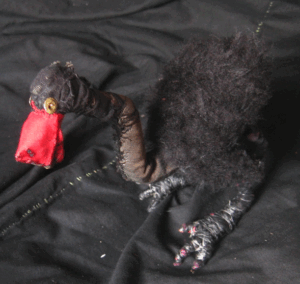If you’re running a one shot, it’s more than okay to drop your PC’s at the entrance to a dungeon and forcibly push them in. On more long lived games though, you’ll want to make sure there’s a reason for the player characters to stick around (rather than returning to their family, their job, or just deciding to call the town guard to handle it). It’s important to the PC’s to know their motivation.
On the flip side, it’s important for players to remember that they’re there to play a game. In most RPGs, you should be building a Hero or at least an Adventurer At Heart who’s eager to throw themselves into a quest with very loose reasoning. “Of course I’ll help! I’m just that kind of half-elf.”
DM and player should meet in the middle here and come up with something fitting and fun. Often, “you were looking for a job – here’s one” is all it takes. But what if you want a little more ramp up to this?
Fortunately, there are some very easy ways for getting buy-in from even the most reluctant of characters and to find out something about them along the way.
Time to pay back that favour. This may be my favourite for a couple of reasons: a) the quest giver can be morally ambiguous, and yet still be owed a debt from the PCs, and b) it sets up a back story for the PC’s and helps them decide their flaw.
In my run of Maze of the Blue Medusa, the initial quest giver was Twisted Wrought Iron, a kenku and master forger. Session zero was a meeting where the party had been summoned and we went around the group with the question “what favour did Twisted do for you that means you own him one?” We kept going around the group and iterating on each others backstories until everyone had a good reason to need to do this job. And, many of the characters “realised” they knew each other too.
Duty calls. What ever the character’s backstory, they lived in a full world before. There’s certainly going to be some person in their lives which you as the DM can exploit. Nobles are often sent off on jobs by their higher ups, and there’s little they can do about it. Holy people are sent on missions.
Remember to ask them how that conversation went, and to describe the authority figure that sent them. That’s some meaty plot there!
Factions are a big deal across the Forgotten Realms, and outside of Faerun you’ll find plenty of allegiances and secret groups. Getting your PCs to join or align with one of these makes plot hooks very easy.
“You’re not the first party we’ve sent on this quest”. You can put this into any adventure with little modification. The buy in here is easy: your sister was in that first party! When the party eventually find the butchered remains of their loved ones, they have a sudden and equally powerful revenge or justice motive.
How did your last adventure go? This may be a brand new character, but this might not be there first adventure. This is a good way to have characters in the group already know each other too. Whatever they say, try to work in a hint towards this adventure. Maybe it was all leading to this, right now.
DMs, note: You don’t have to improvise everything. Get the players to help out.
Finding the character buy-in should be a process the entire group is taking part in. You don’t have to look like a master improvisor. Listen to what your players are hoping to play and lean into that. Let them create whole narratives that are happening outside of the story you’re hoping to tell. Feed off of that, and try to bring it into the adventure.
They’ll be surprised and excited when you ask them “can you tell me more about this god you worship? are they popular? are they the main god of the realm?”
Published adventure hooks. Most 5e adventures, certainly all the published ones, have an ‘adventure hooks’ and/or a ‘backgrounds’ section. These shouldn’t be shrugged at and there’s a lot to be learned in them. One in Elemental Evil picks a villain from the adventure and puts the PC specifically on a quest to hunt the villain down. (Since you’re here, you may as well finish what you started and carry on with the adventure!) Storm King’s Thunder describes how to get PC’s from their previous adventures to the story of the giants.



